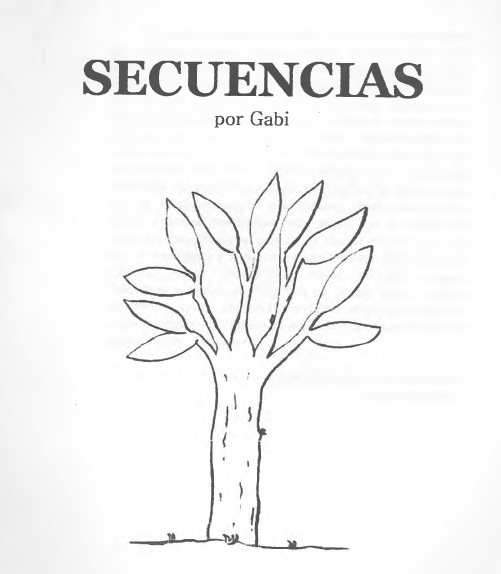Sequences – Circa 2002 – 75 pages – lecture notes – Self edition
This work was released around 2002, it features some credential routines of Gabi’s repertoire that accompanied him throughout all his life such as “Queens and Jokers”, “Centaurs and Sirens” and “Wild Jokers”

“Intelligence is a direction
sensitivity is a state”
Luis Racionero
Finale for “The hunting kings”
Inspired on Larry Jennings’s “The Visitor” Gabi proposes this as a finale for “The Hunting Kings”, the routine popularized by Juan Tamariz.
A card is selected. The black kings are left on the table, while the selection goes between the red ones. After a magic gesture, the selection disappears from between the red kings and is shown to have travelled to the black kings on the table.
One of the things that Gabi used to emphasize about the routine is the number of visual discrepancies that take place that go unnoticed by the spectator. In later works such as “Perceptual Awareness” he delves into these questions from a more theoretical point of view, although Gabi had already explored these types of ideas long before.
Estimation sandwich
The spectator helps find the selection by guessing the location of the selection by using two different cards to “sandwich” a group of cards where the selection supposedly is to be found. The magician magically discards the cards of the group that are not the selection leaving the selection and only the selection sandwiched between the two different cards.
Here again Gabi uses a very bold visual discrepancy to resolve the method and again it goes completely unnoticed due to the construction of the sequence and his understanding on where the spectator’s awareness is in every moment. Interestingly enough the presentation introduces the idea of our brain guessing, completing, and filling the gaps, which is both true and to some extent the basis of the method.
Queens and Jokers (el juego de dolores)
This credential routine was later on released in his book “La depuration constante de lo mismo” as it is a version of a routine by Arturo de Ascanio (“El juego de Dolores”).
It is a very minimalistic routine where the effect is so strong and pure and the handling bare minimum.
Two queens are placed on each of the two jokers. Almost instantly the cards travel, and on one side there are two jokers, and on the other the 4 queens. There is a second phase repeating the effect but altering the order in which the cards are placed on the table (first the queens then the jokers)
In this asymmetrical transposition Gabi again demonstrates a great sensibility and intuition on how human perception works and how to exploit it. In the moment the effect is revealed by fanning the cards (queens) in a particular way he is able to give the illusion that the cards multiply as they are fanned.
Color Triumph
A triumph effect with the four aces (instead of a selection) with the additional kicker of the full transformation deck to a different back (except the four aces on the table proving a great contrast)
In this routine, Gabi makes a special effort not to impoverish the effect of the triumph at the expense of the subsequent color change, which is something very common in this type of routine.
Centaurs and Mermaids
This a reinterpretation of Juan Tamariz’s wonderful routine. Gabi keeps the plot and most of the speech/presentation, but he reinterprets the routine using the regular poker deck. Instead of using cards with drawings of centaurs and mermaids he uses the kings and a card selected.
He actually came up with the sequence of effects years before incorporating the speech of Centaurs and Mermaids. To explain where he got the inspiration to dispense with the drawings, he used to refer to the power of our imagination that we tend to underestimate. We are able to make for ourselves a very accurate picture of the characters of a novel just by reading about them, such as Doyle’s Sherlock Holmes and Dr. Watson, moreover, it has been demonstrated regardless of not having an exhaustive physical description of the characters on the text we all seem to agree on their main traits, such as Sherlock being tall and spindly, and Dr. Watson being short and plump.
Clandestine Aces
The four aces signed on the back magically travel one by one through a postcard.
For this routine Gabi discovered his “5th signature principle”, a brilliant idea to get one ahead using cards actually signed by a spectator. The possibilities of this principle stretches beyond what Gabi explores in this particular routine. He also hints some to other applications such as an impossible torn and restored effect or a two phased signed card to the wallet where the spectator himself wears the jacket where the wallet is.
Wild jokers / the jumping jack
This routine packed with surreal effects where cards transpose and transform into jokers is one of Gabi’s favorite routines from the 90s.
Gabi developed for this routine a personal handling and choreography that can be recognized in other routines such as“Caroline’s Aces” or much posterior routines like his last versions of “Wild Cards”
CURRENTLY NOT AVAILABLE
